Karin Sevegnani
Contrastive Learning for Interactive Recommendation in Fashion
Jul 25, 2022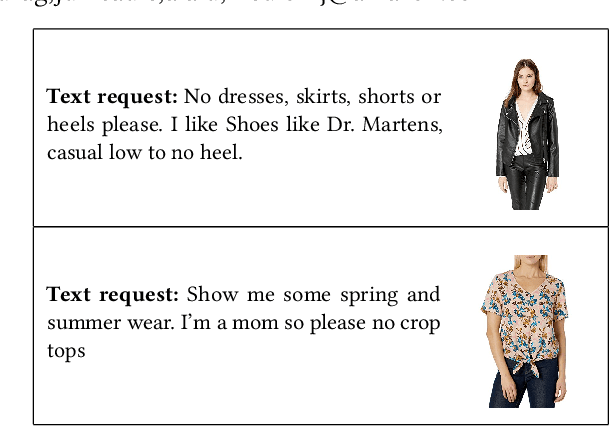
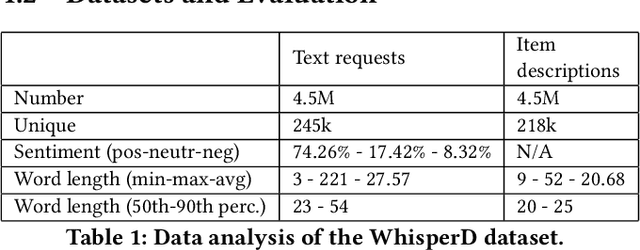
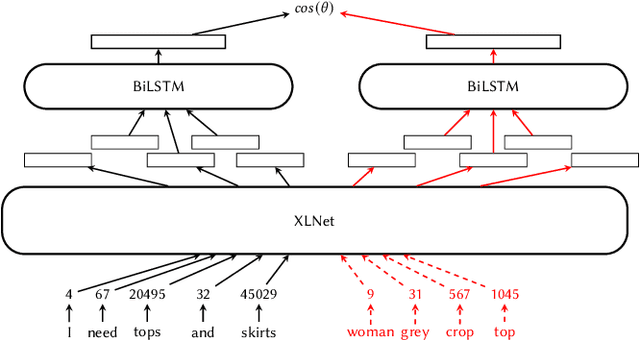

Abstract:Recommender systems and search are both indispensable in facilitating personalization and ease of browsing in online fashion platforms. However, the two tools often operate independently, failing to combine the strengths of recommender systems to accurately capture user tastes with search systems' ability to process user queries. We propose a novel remedy to this problem by automatically recommending personalized fashion items based on a user-provided text request. Our proposed model, WhisperLite, uses contrastive learning to capture user intent from natural language text and improves the recommendation quality of fashion products. WhisperLite combines the strength of CLIP embeddings with additional neural network layers for personalization, and is trained using a composite loss function based on binary cross entropy and contrastive loss. The model demonstrates a significant improvement in offline recommendation retrieval metrics when tested on a real-world dataset collected from an online retail fashion store, as well as widely used open-source datasets in different e-commerce domains, such as restaurants, movies and TV shows, clothing and shoe reviews. We additionally conduct a user study that captures user judgements on the relevance of the model's recommended items, confirming the relevancy of WhisperLite's recommendations in an online setting.
OTTers: One-turn Topic Transitions for Open-Domain Dialogue
May 28, 2021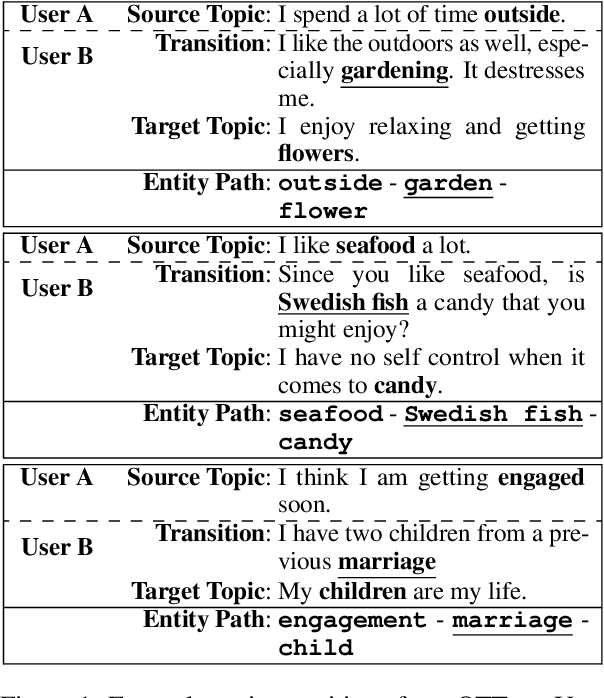
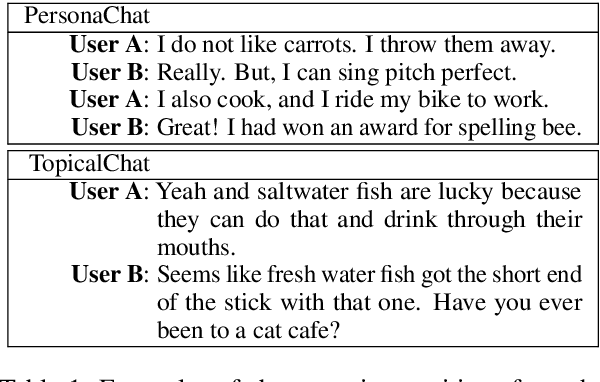
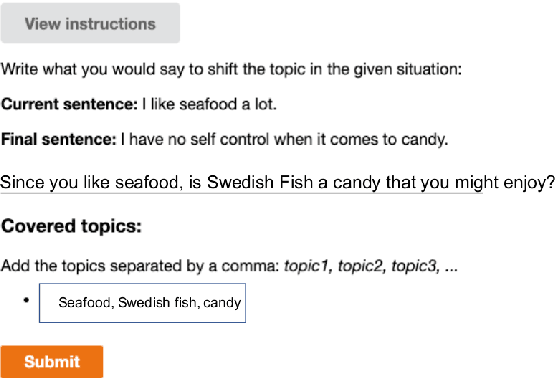

Abstract:Mixed initiative in open-domain dialogue requires a system to pro-actively introduce new topics. The one-turn topic transition task explores how a system connects two topics in a cooperative and coherent manner. The goal of the task is to generate a "bridging" utterance connecting the new topic to the topic of the previous conversation turn. We are especially interested in commonsense explanations of how a new topic relates to what has been mentioned before. We first collect a new dataset of human one-turn topic transitions, which we call OTTers. We then explore different strategies used by humans when asked to complete such a task, and notice that the use of a bridging utterance to connect the two topics is the approach used the most. We finally show how existing state-of-the-art text generation models can be adapted to this task and examine the performance of these baselines on different splits of the OTTers data.
Automatic Quality Estimation for Natural Language Generation: Ranting (Jointly Rating and Ranking)
Oct 10, 2019
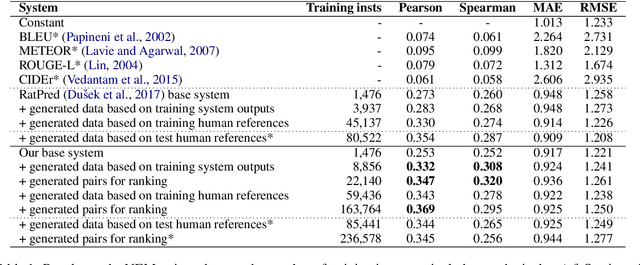
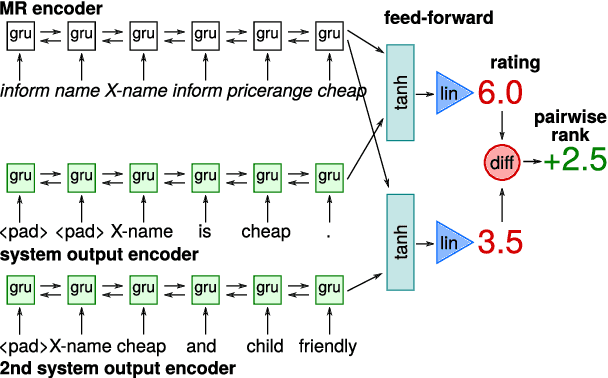

Abstract:We present a recurrent neural network based system for automatic quality estimation of natural language generation (NLG) outputs, which jointly learns to assign numerical ratings to individual outputs and to provide pairwise rankings of two different outputs. The latter is trained using pairwise hinge loss over scores from two copies of the rating network. We use learning to rank and synthetic data to improve the quality of ratings assigned by our system: we synthesise training pairs of distorted system outputs and train the system to rank the less distorted one higher. This leads to a 12% increase in correlation with human ratings over the previous benchmark. We also establish the state of the art on the dataset of relative rankings from the E2E NLG Challenge (Du\v{s}ek et al., 2019), where synthetic data lead to a 4% accuracy increase over the base model.
 Add to Chrome
Add to Chrome Add to Firefox
Add to Firefox Add to Edge
Add to Edge